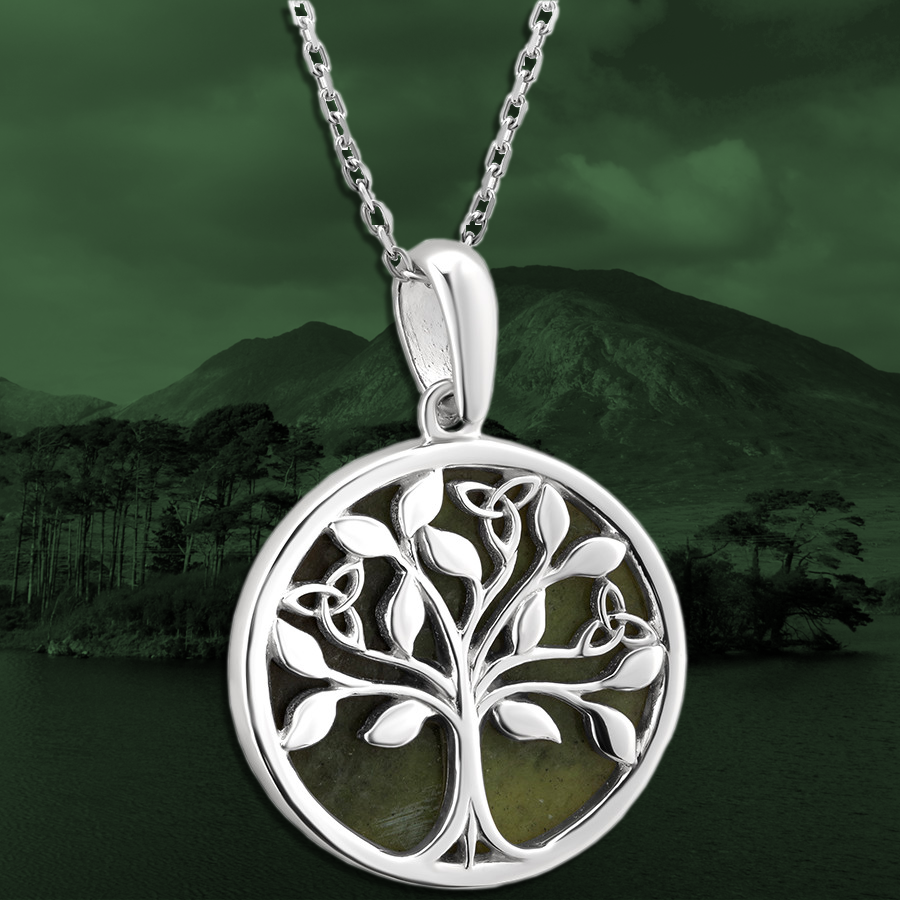Our Celtic ancestors had great respect for trees. Without the detailed scientific understanding we enjoy today, they still knew that trees are lifegiving. They give us clean air and food, as well as the material to build a shelter. Their roots stabilize the ground, protecting against mudslides in heavy rain. Leaves drop to the ground annually, nourishing the soil for the next year’s growth. Trees support wildlife too. The entire cycle of life is summed up by a single tree, and perhaps that is why the Tree of Life motif is so popular on Irish gifts such as jewelry and clothing.
The design of the Celtic Tree of Life symbol perfectly represents the cycle of life. The leafy branches arch down on either side of the trunk and the roots stretch out and up so they meet. The tree is encircled by itself. Roots and branches are equally important. Many cultures around the world have used similar tree symbolism, which shows how primal trees are. But the Celtic Tree of Life is distinct with its roots and branches meeting. It can be adorned with intricate knotwork or other Celtic motifs to emphasize its origins.
View our full range of Celtic Tree of Life Products here.
Trees in Ancient Ireland – Celtic Tree of Life
It might surprise people today, but this island has not always been known for the iconic, sheep-dotted green fields we see on posters and Irish gifts. Once, it was covered in forest. And the people revered the trees that sheltered and provided for them. They knew the trees well and understood the role of each, what it gave, and what its life cycle was. Our ancestors also believed trees had spiritual qualities too. Each of the native trees of Ireland had its own role in their spiritual life.
Some of the most important were oak, rowan, hazel, ash, and hawthorn.
- Oak – Considered a favorite of the faeries, the oak was associated with druids and royalty. Oak (daire) shows up in many Irish place names such as Kildare and Derry.
- Rowan – Druids claimed this tree as their own, and people believed it protected them and their property. This tree is also known as Mountain Ash.
- Hazel – They valued this tree as a food source and also associated it with wisdom. Many place names reference hazel (coll).
- Ash – Now, Irish people view ash trees as the source of hurls but it was once a marker of important places.
- Hawthorn – This tree was where the faeries met, and harming one was extremely bad luck. For generations, people built roads around Hawthorn trees rather than cutting them down.
Trees were so important to our ancestors that Brehon law protected them. The law grouped trees into four different classes and penalized those who harmed them according to the tree’s class. Oak, Hazel, and Ash along with Holly, Yew, Crab Apple, and Scots Pine were in the noble category, and penalties were harshest for damaging them. Hawthorne and Rowan somehow dropped in importance over time, and the Brehon law classed them as common, but we still love them. All of these trees are an important part of our heritage and Ireland’s environment.
Our ancient love of trees remains alive today in the form of Irish jewelry and gifts bearing the Celtic Tree of Life motif.
View our full range of Celtic Tree of Life Products here.

